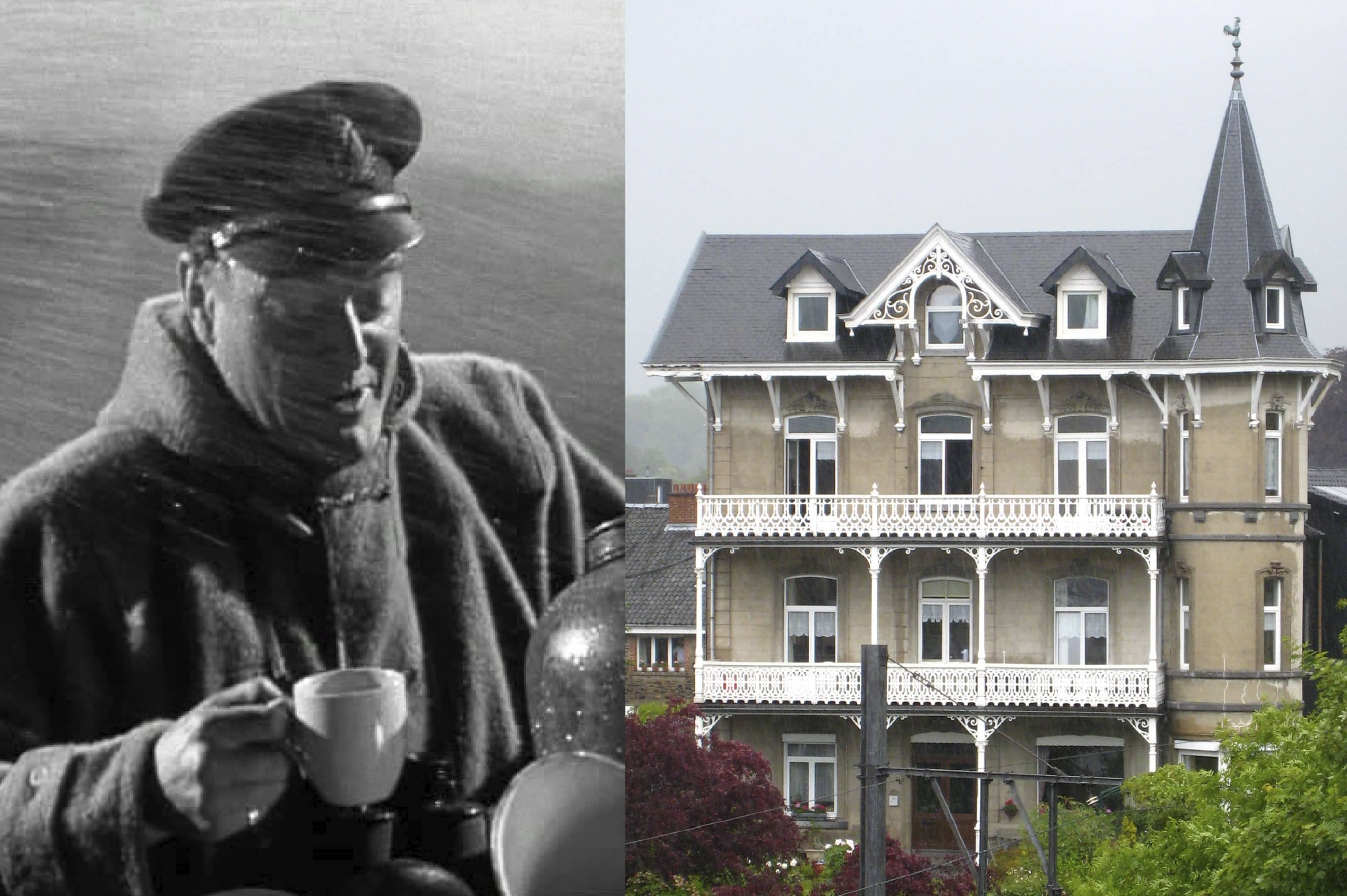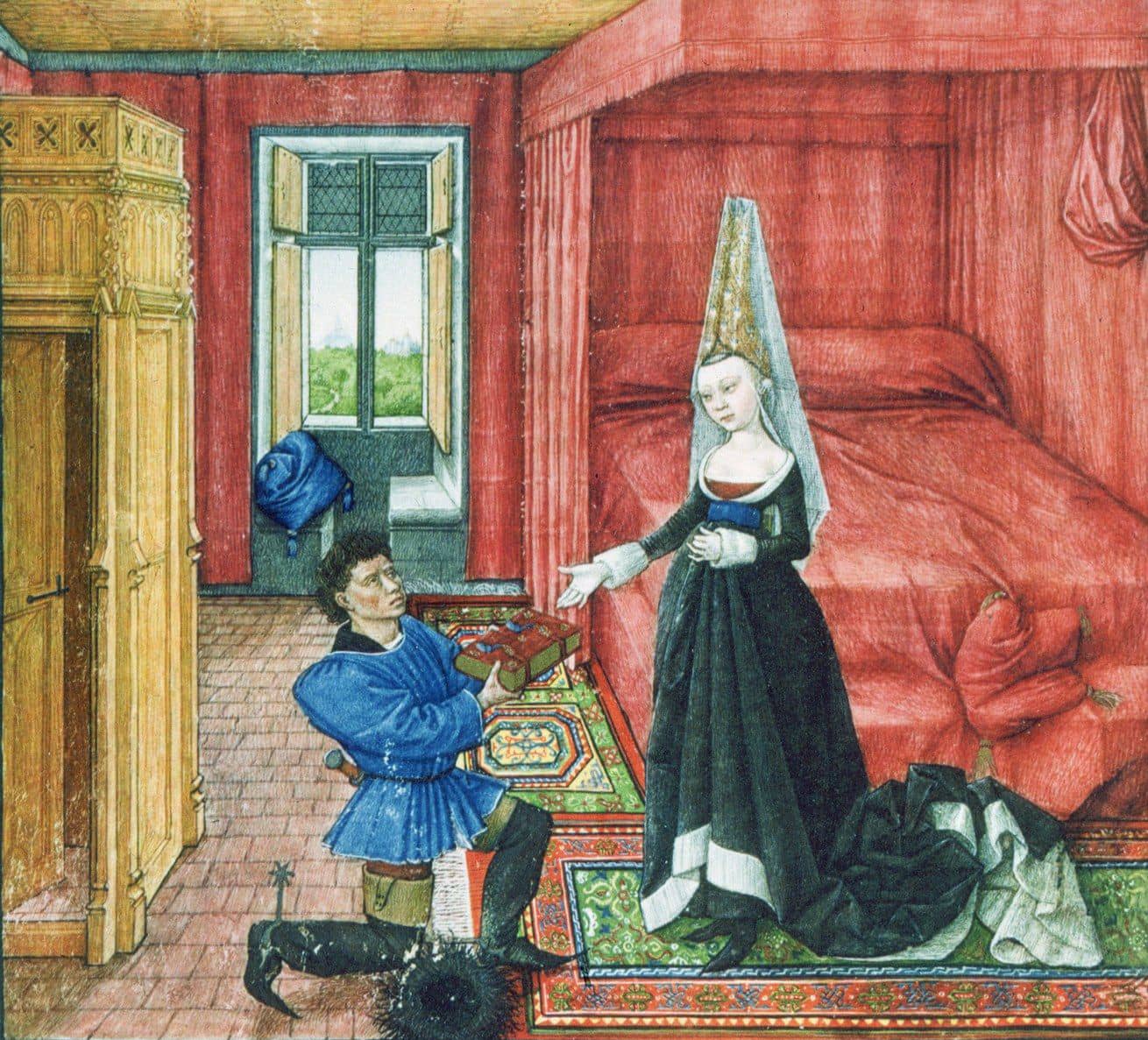
www.buildingsandcities.org/insights/commentaries/building-lessons-vernacular.html
Building Lessons from the Vernacular Past

Why lessons from vernacular buildings need to be rediscovered and transferred into better practice.
Robyn Pender (Whethergauge Ltd) argues that to reduce our dependence on energy to deliver resilient, comfortable and healthy buildings, we must recover vernacular knowledge of 'pre-carbon' buildings, i.e. buildings that existed before widespread fossil fuel exploitation.
Before fossil fuels and inexpensive energy, construction relied on a tiny lexicon of materials: earth, stone, wood, thatch, and fibres made from animal and plant materials. Transport was difficult and expensive, so builders specialised in what could be found in the immediate neighbourhood. If the quality of those local materials was poor, then ways were discovered to use them well. For example, the use of render over rubble stone or timber framing to protect them from the weather. As people began to form more settled communities, a few more energy-intensive materials began to be added to the mix: notably calcined lime for mortars and whitewashes, and bricks and tiles of fired clay. From these simple ingredients grew an extraordinary range of vernacular designs which responded to local needs, local weather, and even local fashions.
Pre-carbon vernacular buildings features
These so-called 'pre-carbon' building envelopes had several common features. Most notably, walls were solid, with few 'through stones' or other joints connecting the exterior directly to the interior. Fred Masham Lee of the Building Research Station christened this type of envelope 'greatcoats', since (like the traditional wool garment) they resist rain by virtue of the porosity of their materials. Although no doubt this system developed out of simple necessity, it proved highly effective. Raindrops are held in the surface pores they hit, not running down the surface but prevented from penetrating further by the air trapped in the deeper pores. Soon the moisture evaporates back into the air. Rain can be drawn in only if it should happen to hit the mouth of a pore connected to a capillary that is already full of water due to some other failure, e.g. water entering the pore through an exposed wall head. Vernacular designs for all but the driest climates are therefore characterised by features designed to protect weak points, such as wide eaves and cornices. Greatcoats also proved excellent at modifying the extremes of exterior temperature and humidity, and supporting healthy interior environments.
Another characteristic was structural plasticity. Foundations were deliberately shallow; materials and assemblies alike could absorb all but the most extreme winds and ground movements. With the exception of lead roof sheeting, which was rare, elements did not tend change dimension significantly as the temperature changed, so thermal expansion joints (a potential point of weakness) were unnecessary.

Any cracks and local failures that did occur could be easily repaired, using the original materials. A basic principle of 'pre-carbon' buildings was that ordinary occupants had helped to construct them, and knew what needed to be done by way of maintenance and repair. Care was made easy since it drew on materials such as clay, which could be readily obtained for free.
But even more importantly for the story of energy, occupants of pre-carbon buildings knew from experience how to operate their buildings well: how to use furniture and fittings to enhance comfort at different times of year, for different users, and for different activities (English Heritage 2014). Notably, they understood this depended almost entirely on the way they lost their body heat to the surroundings. In cold weather their radiant loss was countered by rugs and draperies over walls as canopies, which could also be used together with furniture such as settles and screens to control draughts (Pender 2022). This approach to comfort permitted a high degree of ventilation, even in winter, which was considered desirable; and in summer, occupants could benefit from the cooling effects of bare walls.
This way of constructing and using buildings continued for many millennia right across the world, but in the Global North it was to be turned on its head by the arrival of cheap, easily exploitable energy in the form of fossil fuels.
What changed in post-carbon buildings?
The first steps to what we might call 'post-carbon' architecture begin with the invention of stained glass towards the end of the first millennium AD. Glazing of windows introduced new problems, for glass is not a greatcoat material. Rather, it is a 'raincoat': rain is not held in pores, but instead collects into a liquid flow that runs down the surface. It was learnt quickly that walls would get wet below glazed windows. Moreover, like all raincoat materials, glass changes dimension strongly with changing temperature, so cracking was common, and joints were difficult to waterproof; the flowing rainwater could therefore easily wick into the interior. In response, master builders quickly developed new features to minimise rain hitting the glass: the hood mouldings, drips, and cornices that are so characteristic of 'Gothic' architecture.
Glassmaking used large amounts of energy (Pender 2021) and for hundreds of years it remained almost exclusively the preserve of the church. In the 17th century glass became the first material to be produced using coal. After that glazed windows quickly became common and larger. As glass began to occupy a significant area of the envelope, another problem appeared: solar gain. Overheating and damage to contents from sunlight led to the rapid development of other new technologies: the vertically sliding sash window and shading in the form of blinds, curtains and awnings (English Heritage 2012).
The availability of fossil fuel energy led to a cascade of social economic changes, including the shift of the population towards cities and speculative building. The new technology supported these changes: for example, sash windows provided the appropriate lighting and ventilation for terraced housing.
Materials manufactured using vast quantities of energy or requiring significant transport became increasingly common: not only glass, but also iron and cement, and eventually aluminium. The result was that raincoat envelopes proliferated but these began to display numerous problems. Vernacular designs, local materials and greatcoat construction finally disappeared when the traditional ways of teaching building knowledge were lost in the upheavals after the First World War.
In the aftermath there was a need to rebuild rapidly, and the new social-economics of the Global North privileged centralised designs and materials, standardising, and specialised building professions. In the Global North construction became an industry and the preserve of professionals trained exclusively in building envelopes made from high-energy materials assembled in ways that were increasingly supported by energy-intensive servicing. By employing 'fossil fuel slaves' - central heating, artificial lighting, lifts, mechanical ventilation and cooling and dehumidification - the limitations of this new type of construction could be glossed over. Cutting-edge design was prized, leading to buildings becoming taller, deeper and lightweight, designing-in the need for energy intensive services. The loss of vernacular knowledge became deeply ingrained as international supply chains, standardisation, and building regulations developed in response to this new approach to construction and operation.
Going back to vernacular principles for future buildings
Although the modern era undoubtedly made positive progress e.g. water supplies and sanitation, many of the changes to the way we construct and operate buildings have been less positive. These poor outcomes are rarely discussed outside the world of building conservation.
Faced with the ever-increasing use of energy in the built environment, Global North policymakers are pressing for fabric-based retrofit of pre-carbon greatcoat buildings, framing these as 'hard-to-treat'. However, the tools, models and knowledge used to support these policies often do not understand these buildings' construction and operation. This means they are not able to consider scenarios in which vernacular buildings can be low carbon and more sustainable (Wise et al. 2021). The traditional modern professions are not trained to appreciate why converting greatcoats into raincoats can led to disaster (de Selincourt 2018; Donovan 2020), which is just one reason why current policies designed to deal with post-carbon buildings are not appropriate (Pender & Lemieux 2020).
What lessons should be gleaned from our pre-carbon past? It is often overlooked that energy use in buildings is dependent on the way we occupy buildings, not just the way we construct them. In particular, occupant health and comfort do not equate to a tightly controlled air temperature (Pallubinsky et al. 2023). Additionally, the traditional ways of passing on building knowledge from master to apprentice need to be recovered to ensure effective feedback between building and builder (Bordass & Leaman 2005).
It is time to question many Global North assumptions about what a healthy and functional building looks like. To build a better future, especially in the face of rapid change, lessons from vernacular buildings need to be rediscovered and transferred into better practice. It is worth emulating our pre-carbon predecessors who proved themselves competent in harnessing experience and knowledge.
References
Bordass, B. & Leaman, A. (2005). Making feedback and post-occupancy evaluation routine 3: Case studies of the use of techniques in the feedback portfolio. Building Research & Information, 33(4), 361-375. https://doi.org/10.1080/09613210500162032
de Selincourt, K. (2018, May 15). Preston retrofit disaster. http://www.katedeselincourt.co.uk/preston-retrofit-disaster/
Donovan O. (2020, January 28). Arbed: Will it leave more than green slime behind? [editorial]. Senedd Home. https://seneddhome.com/2020/01/arbed-will-it-leave-more-than-green-slime-behind/
English Heritage. (2012). Practical Building Conservation: Glass and Glazing. London: Ashgate/Routledge.
English Heritage. (2014). Practical Building Conservation: Building Environment. London: Ashgate/Routledge.
Pallubinsky H., Kramer R.P. & van Marken Lichtenbelt W.D. (2023). Establishing resilience in times of climate change - a perspective on humans and buildings. Climatic Change, 176:135. https:doi.org/10.1007/s10584-023-03614-0
Pender R. (2021). Making good decisions: avoiding alignment problems and maladaptation in retrofit and construction. Journal of Architectural Conservation, 27:3, 151-175. https:doi.org/ 10.1080/13556207.2021.1965759
Pender, R. (2022). Thermal Comfort and Fabric. [commentary] Buildings & Cities https://www.buildingsandcities.org/insights/research-pathways/thermal-comfort-and-fabric.html
Pender, R. & Lemieux, D.J. (2020). The road not taken: building physics, and returning to first principles in sustainable design; Atmosphere 11(6), 620. https://doi.org/10.3390/atmos11060620
Wise, F., Moncaster, A. & Jones, D. (2021). Rethinking retrofit of residential heritage buildings, Buildings and Cities 2(1), 495-517. https://doi.org/10.5334/bc.94
Latest Peer-Reviewed Journal Content
Designing for pro-environmental behaviour change: the aspiration–reality gap
J Simpson & J Uttley
Lifetimes of demolished buildings in US and European cities
J Berglund-Brown, I Dobie, J Hewitt, C De Wolf & J Ochsendorf
Expanding the framework of urban living labs using grassroots methods
T Ahmed, I Delsante & L Migliavacca
Youth engagement in urban living labs: tools, methods and pedagogies
N Charalambous, C Panayi, C Mady, T Augustinčić & D Berc
Co-creating urban transformation: a stakeholder analysis for Germany’s heat transition
P Heger, C Bieber, M Hendawy & A Shooshtari
Placemaking living lab: creating resilient social and spatial infrastructures
M Dodd, N Madabhushi & R Lees
Church pipe organs: historical tuning records as indoor environmental evidence
B Bingley, A Knight & Y Xing
A framework for 1.5°C-aligned GHG budgets in architecture
G Betti, I Spaar, D Bachmann, A Jerosch-Herold, E Kühner, R Yang, K Avhad & S Sinning
Net zero retrofit of the building stock [editorial]
D Godoy-Shimizu & P Steadman
Co-learning in living labs: nurturing civic agency and resilience
A Belfield
The importance of multi-roles and code-switching in living labs
H Noller & A Tarik
Researchers’ shifting roles in living labs for knowledge co-production
C-C Dobre & G Faldi
Increasing civic resilience in urban living labs: city authorities’ roles
E Alatalo, M Laine & M Kyrönviita
Co-curation as civic practice in community engagement
Z Li, M Sunikka-Blank, R Purohit & F Samuel
Preserving buildings: emission reductions from circular economy strategies in Austria
N Alaux, V Kulmer, J Vogel & A Passer
Urban living labs: relationality between institutions and local circularity
P Palo, M Adelfio, J Lundin & E Brandão
Living labs: epistemic modelling, temporariness and land value
J Clossick, T Khonsari & U Steven
Co-creating interventions to prevent mosquito-borne disease transmission in hospitals
O Sloan Wood, E Lupenza, D M Agnello, J B Knudsen, M Msellem, K L Schiøler & F Saleh
Circularity at the neighbourhood scale: co-creative living lab lessons
J Honsa, A Versele, T Van de Kerckhove & C Piccardo
Positive energy districts and energy communities: how living labs create value
E Malakhatka, O Shafqat, A Sandoff & L Thuvander
Built environment governance and professionalism: the end of laissez-faire (again)
S Foxell
Co-creating justice in housing energy transitions through energy living labs
D Ricci, C Leiwakabessy, S van Wieringen, P de Koning & T Konstantinou
HVAC characterisation of existing Canadian buildings for decarbonisation retrofit identification
J Adebisi & J J McArthur
Simulation and the building performance gap [editorial]
M Donn
Developing criteria for effective building-sector commitments in nationally determined contributions
P Graham, K McFarlane & M Taheri
Join Our Community

The most important part of any journal is our people – readers, authors, reviewers, editorial board members and editors. You are cordially invited to join our community by joining our mailing list. We send out occasional emails about the journal – calls for papers, special issues, events and more.
We will not share your email with third parties. Read more



Latest Commentaries
COP30 Report
Matti Kuittinen (Aalto University) reflects on his experience of attending the 2025 UN Conference of the Parties in Belém, Brazil. The roadmaps and commitments failed to deliver the objectives of the 2025 Paris Agreement. However, 2 countries - Japan and Senegal - announced they are creating roadmaps to decarbonise their buildings. An international group of government ministers put housing on the agenda - specifying the need for reduced carbon and energy use along with affordability, quality and climate resilience.
Building-Related Research: New Context, New Challenges
Raymond J. Cole (University of British Columbia) reflects on the key challenges raised in the 34 commissioned essays for Buildings & Cities 5th anniversary. Not only are key research issues identified, but the consequences of changing contexts for conducting research and tailoring its influence on society are highlighted as key areas of action.